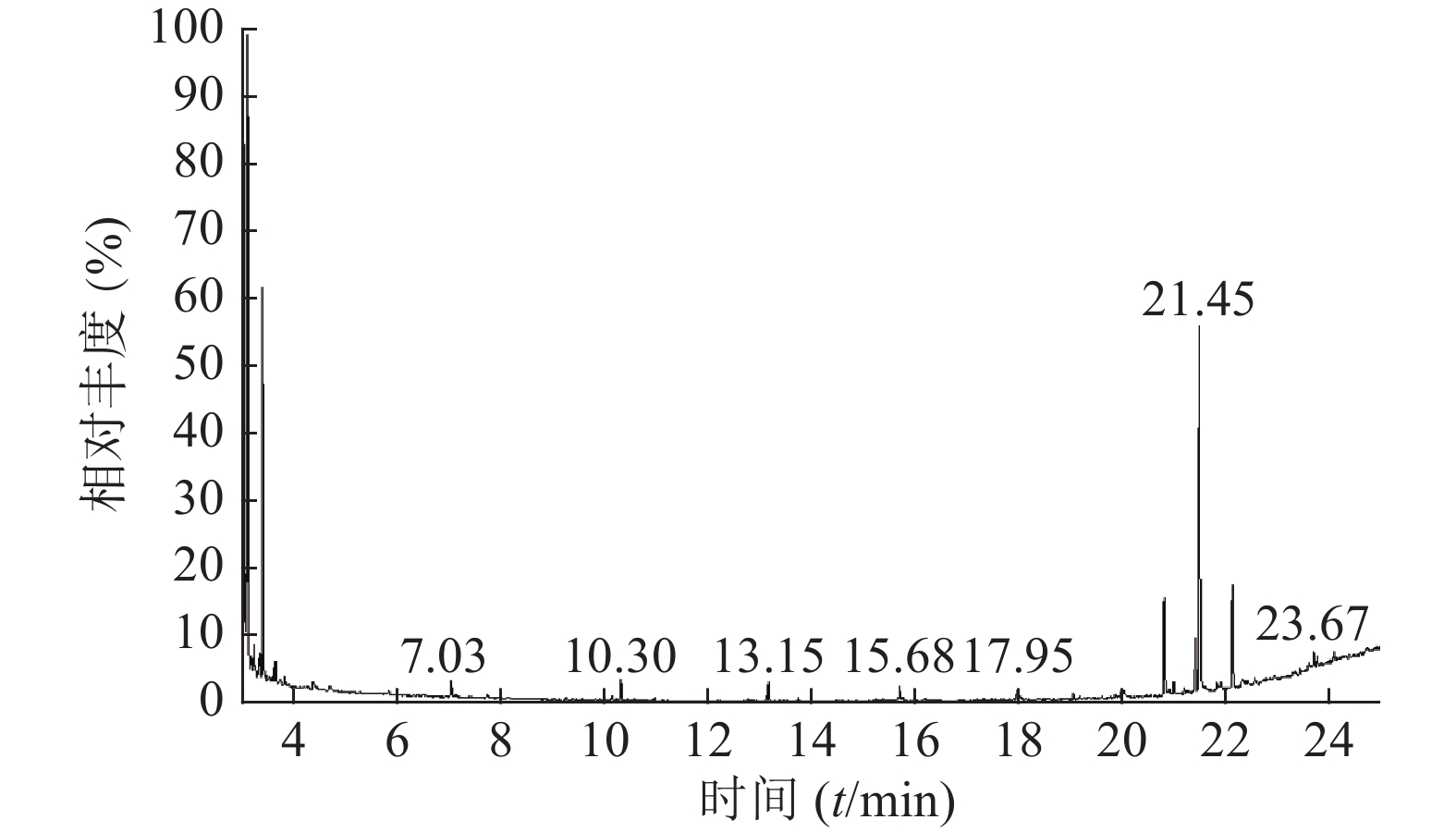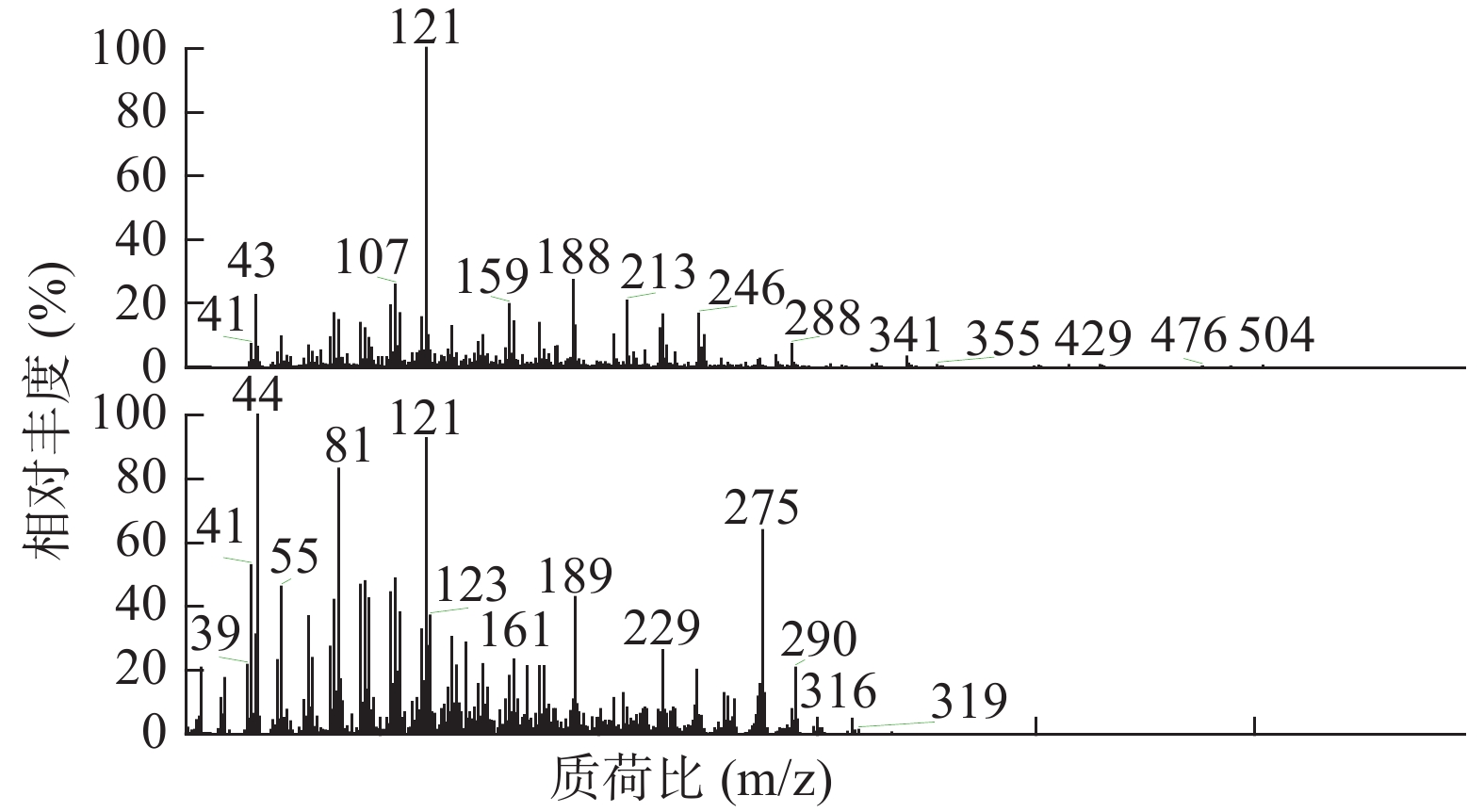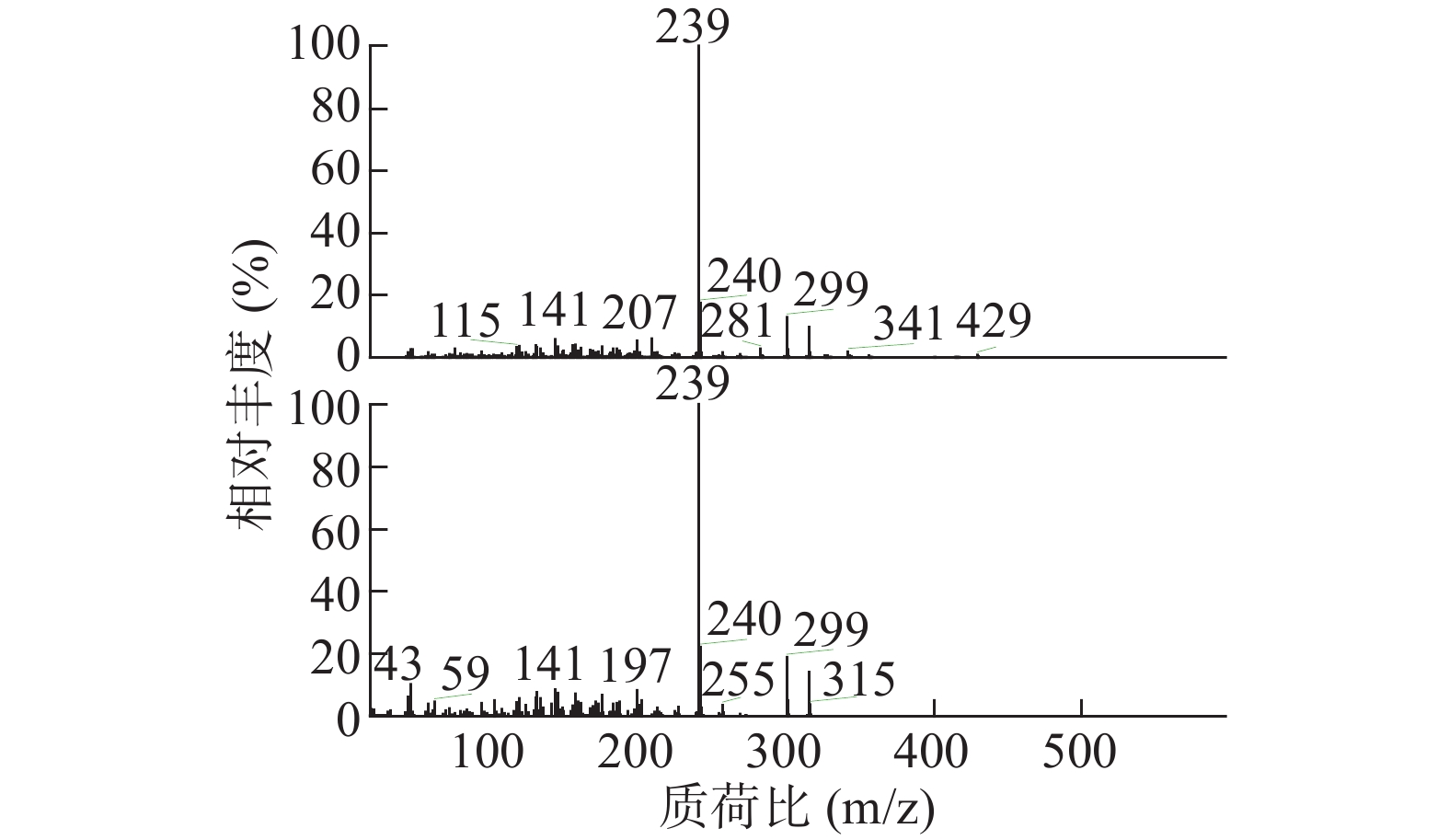-
透明质酸(hyaluronic acid, HA)又名玻璃酸。首次在1934年由Meyer和Palmer自牛眼玻璃体内提取分离[1]。HA同样广泛存在于人体中,包括人眼的玻璃体、脐带和皮肤等组织(表1),是细胞外基质的组成部分[2]。HA化学名称为(1,4)-O-β-D葡萄糖醛酸-(1,3)-2-乙酰氨基-2-脱氧-β-D葡萄糖,是一种高分子直链聚糖,由交替的N-乙酰葡糖胺(GlcNAc)和葡糖醛酸(GlcA)双糖单位反复交替而形成的一种聚合物[3],其分子量的差别很大,分子式为(C14H20NO11Na)n,双糖单位的分子量为401.3(图1)。由于其直链的链轴L单糖之间氢键的作用,HA分子在空间呈刚性的螺旋柱型,其半径为200 nm。HA呈强亲水性,在水溶液中,HA亲和的水分约为其本身重量的1000倍。除了亲水性外,HA溶液还有着独特的流体力学性质,其水溶液是一种非牛顿型流体,因此,有着良好的黏弹性和应变性[4]。目前HA广泛应用于生物材料、药物靶向制剂、美容以及腹部手术后预防粘连等[5]。
表 1 人体不同组织中透明质酸的含量
组织或体液 HA浓度(μg/ml) 眼玻璃体 140~340 脐带 4100 关节滑液 1400~3600 真皮 200~500 表皮 100 胸淋巴液 0.2~50 尿液 0.1~0.3 血清 0.01~0.1 -
HA作为一种酸性黏多糖,广泛分布于人体各种组织的细胞间质中,具有维持细胞渗透压稳定,使相邻细胞黏合等重要生理功能[6]。另外,HA还能调节细胞的黏附和运动功能,调控细胞分化和增殖,维持组织的生物力学性能正常[7]。HA在眼科手术中具有广泛应用,主要是由于其具有黏性、假塑性、弹性、黏合性和涂布性等特性,这些特性使其具有黏弹性衬垫、组织内分离、黏性阻塞、黏性止血、黏弹性缓冲以及弹性固定等重要功能[8]。
干眼病是一种常见的眼科综合症,主要由眼腺细胞功能紊乱等原因所致,包括各类结膜炎等。HA富含亲水基团,能够与水分子结合,起亲水及润滑作用,因此可以在一定程度上缓解干眼症状。《干眼临床诊疗专家共识(2013)》指出[9],“干眼症治疗目的:轻度干眼症患者是缓解眼部症状,严重干眼患者是保护视功能”。透明质酸钠滴眼液可以冲洗并稀释眼表面炎性介质,降低泪液渗透压,促进眼表上皮的愈合,以及促进眼表纤维连结蛋白分泌和沉积,从而在眼表上皮损伤愈合中起重要作用。俞惠玲[10]对106例干眼症患者的研究发现,单独使用0.3%透明质酸钠滴眼液,对干眼症有效率达81.8%;透明质酸钠滴眼液加普拉洛芬滴眼液联合使用有效率高达92.3%。
-
HA常用于化妆品保湿成分,包括HA保湿锁水霜以及保湿补水面膜等。人体内50%HA存在于皮肤真皮内,为胶原纤维和弹性蛋白的分布提供空间架构。三者共同形成皮肤的支架,维持皮肤组织稳定,保持皮肤弹性。若有一者缺失,可加速皮肤衰老和皱纹的形成[11]。HA作为组成人体结缔组织和滑液的成分之一,因其生物相容性较高,是目前全球用量最大的皮肤填充物之一,常用于眼周眉间纹、鱼尾纹、抬头纹等治疗[12-14]。薛紫涵等人通过对23例轻中度面部松弛患者,进行面部韧带处注射HA 0.2 ml,23例患者未出现红肿、疼痛、瘀青和过敏反应,也未发生硬块结节、填充物移位、血管栓塞、皮肤坏死等不良反应。注射后,所有人均有不同程度的眼角和颧下松弛的改善,并有提升法令纹、口角上扬、下颌缘更清晰以及面部更加紧致等效果。随访表明,注射效果约持续3~6个月,若欲维持效果则需半年后再次注射[15]。HA能够调控胶原的合成,降低炎性介质的生成,抑制创面毛细血管的渗出和纤维蛋白原的沉积,抑制成纤维细胞合成胶原纤维,从而抑制手术瘢痕形成[16-18]。Patel采用无针注射交联HA,治疗了两例痤疮疤痕患者,间隔4周后,再重复给药一次,能有效减轻病人的疤痕程度,无不良反应[19]。
-
HA是关节滑液的重要成分,作为润滑剂给骨骼末端提供保护[20]。在最初合成时,HA主要由2×105~2×106 Da之间的高分子量HA聚合物组成[21]。在骨关节炎和类风湿性关节炎,HA分子量变小,滑液黏稠度降低,使得HA黏弹性下降,从而导致关节面的磨损增加[20]。关节腔内注射高分子量HA能有效的缓解骨关节炎和类风湿性关节炎患者的疼痛,起到一定的治疗作用[22]。HA除了润滑作用外,还能降低巨噬细胞的吞噬作用,改善炎症反应[23]。苑树岩等给35例膝关节炎患者的关节腔内注射2.5 ml 透明质酸钠,给药后患者疼痛减轻,关节滑液中IL-6β含量下降[24]。Seung发现交联HA凝胶支架易与人牙髓干细胞和模拟肽混合,混合溶液便于注射。注射给小鼠后,交联HA迅速在注射部位形成水凝胶支架,并可安全无刺激的在小鼠体内保留8周以上。牙髓干细胞在水凝胶中至少可存活8周,模拟肽可诱导牙髓干细胞向成骨细胞分化,交联HA凝胶支架作为生物材料,可以用于骨骼组织工程[25]。
-
HA用于外科手术后防止组织黏连,能有效的降低黏连的发生率和减轻黏连的严重程度[26]。HA防止术后组织黏连的机理是:①HA凝胶具有高分子纤维网状结构,涂布于组织表面,能起到阻隔作用,在腹膜修复时,形成一种短暂的保护屏障;②抑制术后出血和渗出,减少能形成永久性黏连骨架的血块数量,避免组织接触面的纤维蛋白沉着;③HA抑制中性粒白细胞迁移和吞噬作用,降低炎性反应[27];④HA与间质细胞和成纤维细胞膜表面高亲和力的HA受体蛋白相互作用,提高这些细胞的迁移及趋化能力,从而促进了体内修复过程;⑤HA凝胶覆盖于创伤浆膜表面,在一定时间内不被降解代谢,使早期的创面组织修复能持续有效的进行,直至在创面形成一连续的间皮细胞覆盖层,完成组织修复。
蔡同凯等[28]采用大鼠盲肠和腹壁双侧损伤模型,以Nair黏连5级分类法判断腹腔黏连程度,发现术后30 d,透明质酸钠凝胶组SD大鼠腹腔黏连明显低于模型组,透明质酸钠凝胶组极限荷载比和刚度比与假手术组和模型组无统计学差异。医用透明质酸钠凝胶能有效降低黏连程度,并且不影响创面的恢复。Zhang等采用大鼠两次子宫损伤模型,研究了医用透明质酸钠和氧化再生纤维素预防大鼠腹膜黏连的疗效,发现医用透明质酸钠和氧化再生纤维素均能有效的降低黏连损伤的程度[27]。固体医用膜在使用时,难以被准确固定在创伤部位,在组织愈合后,还需要再次手术取出医用膜[29]。液体形式的HA,不仅便于操作,易于覆盖在创伤部位,而且其在体内保留的时间与伤口愈合周期一致。
-
近年来,HA作为药物载体,与其他药物反应形成化合物,发挥缓释作用和靶向作用,使其结合的药物能够定时或定向地被释放[30-32]。HA作为纳米材料,可以与抗肿瘤药物形成靶向制剂,治疗盆腔肿瘤。Lee发现透明质酸纳米粒易于被CD44受体阳性患者的结肠癌HCT116细胞内吞吸收[33],HA与紫杉醇共轭形成的纳米复合物,体外对HCT116细胞显示出更强的细胞毒作用[34]。Bajaj将紫杉醇用HA胶体包裹,延长了紫杉醇在裸鼠体内的存留时间,并有效减少人卵巢癌SKOV-3肿瘤的生长和转移[35]。Xiao等采用透明质酸-十八烷基胺结构的脂质载体,装载紫杉醇,其装载率被提高到72%。在裸鼠体内,装载紫杉醇的透明质酸-十八烷基胺载体在肝脏和脾脏的分布减少,而在肿瘤组织的分布增加[36]。Choi将伊立替康封装在HA纳米粒中,在裸鼠体内能有效抑制人结肠癌CT29肿瘤的生长,同时能降低伊立替康的不良反应。利用荧光技术可以观察结肠癌CT26肿瘤的转移[37]。Zhang等利用环丙沙星和万古霉素与HA偶联制备为抗生素缓释颗粒,能在一周内有效抑制绿脓杆菌、金黄色葡萄球菌和枯草芽孢杆菌[38]。
-
人体内HA主要由HA分解酶(Hyals)分解,其中最主要的酶是Hyal-1和Hyal-2。Hyal-2将HA降解成低分子量HA,Hyal-1将HA降解成低分子寡聚体。高分子量HA仅β1、4键暴露,降解缓慢,当HA分子量低于30万时,HA聚集能力降低,降解速度呈指数倍增加[39]。有报道[40]HA能被降解为多糖,为葡萄球菌和链球菌等提供营养。Zhang等[41]研究表明,在富含HA的培养基中,化脓性链球菌的M1蛋白、胶原样表面蛋白和糖酵解酶甘油醛-3-磷酸脱氢酶等几种致病因子上调。但是也有报道[42-43],HA能抑制SA等细菌的生长,1 mg/ml浓度时就能达到最大抑制作用,但是没有杀菌作用。高浓度高分子量HA体外抑制SA和大肠埃希菌的生长,并且体内体外均不影响抗生素的药效[28]。Jae采用小鼠盲肠结扎穿刺法,构建小鼠腹腔脓肿模型,通过腹腔注射高分子量HA(20 mg/kg),能有效的降低腹腔菌载量,降低炎症因子水平,提高小鼠的存活率[44]。
-
内源性低分子量HA可以促进血管生成,增加肿瘤细胞的供血,促进肿瘤细胞的生长[45-47];另外,内源性低分子量HA也可以促进肿瘤细胞表面CD44的分泌,从而促进肿瘤细胞的转移[48]。通过抑制透明质酸合成酶3(HAS3),降低低分子量HA的产生,可使前列腺肿瘤血管生成减少70%~80%,肿瘤生长速度降低[49]。透明质酸合成酶2(HAS2)过表达,高分子量HA合成增加,组织中高分子量HA浓度升高,反而体现出抑制肿瘤细胞的生长[50]。也有文献报道,内源性的HA能促进肿瘤细胞增殖和扩散[51-53]。外源性HA根据分子量不同,应用也不同[32,54](表2)。外源性高分子量HA进入人体后会促进HAS2高表达,加速内源性高分子量HA合成,使机体高分子量HA浓度增加,从而抑制肿瘤的生长和扩散[55]。Aikaterini用外源性高分子量HA显著抑制 HT1080细胞的迁移,当加入HA分解酶水解高分子量HA后,HT1080 细胞运动性显著增加[56]。高分子量HA钠凝胶能够抑制结肠癌细胞的转移[57]。除了和抗肿瘤药物合用,外源性寡聚体HA单用还可以与CD44 受体结合,增强肿瘤细胞的凋亡[58],与HA介导的运动受体结合,降低肿瘤细胞的转移[59]。
表 2 不同相对分子质量外源性透明质酸的应用
用途 分子量(Da) 作用 骨关节注射液 >5×106 对受损部位润滑和机械保护作用; 眼科手术黏弹剂 >3×106 撑起前房,减少术后炎症的发生 滴眼液 (1~1.5)×106 增加滞留时间;润滑和保护作用 术后防黏连 >1×106 形成隔离层,抑制炎症反应 化妆品 (0.5~2)×106 保湿 抗肿瘤药载体 (5~7.5)×105 与肿瘤CD44靶点特异性结合 对创伤修复 <5×105 促进巨噬细胞的吞噬作用;促进血管形成 抗肿瘤作用 800~3200 特异性结合CD44受体和RHAMM受体 -
HA的结构与功能决定了其可用于生物材料、药物靶向制剂、美容以及腹部手术后预防黏连等,但是随着HA可能促进肿瘤细胞的生长和转移以及促进细菌的生长等疑问的出现,使得临床使用HA变得慎之又慎。
本文对HA的临床应用和HA对肿瘤以及细菌作用机制进行综述,对临床安全使用HA特别是将HA用于腹盆腔肿瘤患者的术后防黏连具有一定的指导意义,但其相关作用机制还需要进一步研究。
Research progress on action mechanism and clinical application of hyaluronic acid
-
摘要: 透明质酸广泛存在于人体中,是细胞外基质的重要成分,具有独特的流体力学性质、良好的黏弹性和应变性。目前透明质酸被广泛用于生物材料、药物靶向制剂、美容以及腹部手术后预防黏连等。随着透明质酸应用范围的扩展及新型医用材料的不断涌现,近年来对透明质酸的研究日益增加。本文对透明质酸的临床应用及其作用机制进行综述,以期为透明质酸产品的进一步研发和安全应用提供参考。Abstract: Hyaluronic acid is widely present in the human body. It is an important component of extracellular matrix. It has unique hydrodynamic properties, good viscoelasticity and strain properties. At present, hyaluronic acid has been widely used in biomaterials, targeted-drug preparations, cosmetics and prevention of adhesion after abdominal surgery. With the expansion of the application scope of hyaluronic acid and the continuous emergence of new medical materials, the research on hyaluronic acid has been increasing in recent years. This paper reviews the clinical application of hyaluronic acid and its mechanism, in order to provide reference for the further development and safe application of hyaluronic acid products.
-
松科(Pinaceae)植物马尾松(Pinusmassoniana Lamb.)主要产于江苏、安徽、河南、陕西及长江中下游各省区,资源丰富[1]。松叶“味苦,温;暖,无毒”,具有祛风燥湿、杀虫、止痒之功用。水煎、浸酒以外用或内服[2]用于治风湿痿痹、跌打损伤、湿疮、疥癣、慢性气管炎等症以及预防感冒、流脑。文献报道马尾松叶中的主要化学成分为挥发油、黄酮、多糖、木脂素和树脂等,现代药理研究表明马尾松叶提取物具有抗氧化、抗衰老、抑菌等多方面活性[3-15]。
近年来由于抗生素的滥用、器官移植、免疫抑制剂以及HIV患者的增多,深部真菌感染发病率逐年上升,其中白念珠菌是最主要的致病菌。氮唑类药物氟康唑是临床上首选的抗白念珠菌(Candida albicans)感染药物。但是长期和重复给药导致白念珠菌对氟康唑耐药越来越强。目前联合用药是恢复耐药真菌对治疗药物的敏感度,提高耐药菌对氟康唑的敏感性,治疗深部耐药菌感染的一种有效的治疗途径。从天然活性成分中寻找与现有的抗真菌药物联合发挥协同作用的小分子化合物是近年来的研究方向之一[16-20]。本文选用接近“传统水煎或浸酒法”的传统中药提取方法,用乙醇加热提取后,石油醚再萃取的方法得到马尾松叶低极性部位,通过测定马尾松叶低极性部位协同氟康唑抗耐药白念珠菌的MIC80值,同时,采用气相色谱-质谱的方法对低极性部位的化学成分进行分析鉴定,初步探究其联合氟康唑的体外抗真菌活性。
1. 材料
1.1 试剂与设备
Thermo Trace GC Ultra气相色谱、Thermo DSQ Ⅱ质谱、Xcalibur工作站(美国赛默飞世尔公司);马尾松叶(浙江东阳市,经海军军医大学黄宝康教授鉴定为马尾松Pinusmassoniana Lamb.);所有试剂均为分析纯;水为重蒸水;载气为高纯氦气。
氟康唑注射液(上海信谊金朱药业有限公司);黄芩素(上海历鼎生物技术有限公司);二甲基亚砜(DMSO,中国医药集团上海化学试剂公司);白念珠菌103(Candida albicans103,海军军医大学长海医院真菌室提供)。
1.2 马尾松叶低极性部位的制备
取干燥马尾松叶,粉碎,称取二份,每份50.0 g,分别用150 ml石油醚和80%乙醇加热回流提取1h,滤过;滤渣再分别用150 ml石油醚和80%乙醇加热回流提取1 h,滤过。分别合并两次滤液,滤液用旋转蒸发仪减压浓缩,回收溶剂,得石油醚提取物(简称醚提取物)2.5 g和80%乙醇提取物(简称醇提取物)8.0 g。取干燥后的醇提取物5.0 g,加入水100 ml混溶,获得混悬液。混悬液用50 ml石油醚萃取3次,合并浓缩石油醚萃取液,获得石油醚浸膏(简称醚浸膏)即马尾松叶低极性部位0.8 g。取125 mg醚浸膏,置于100 ml量瓶中,加入80%甲醇,超声、加热使其几近完全溶解,放置、冷却;再加入80%甲醇定容,摇匀、放置;吸取1 ml定容后的浸膏液,微孔滤膜过滤后待测。
1.3 色谱-质谱条件
色谱柱TR - 35MS石英毛细管(30 m×0.25 mm,0.25 μm),程序升温,起始温度40 ℃,保持2 min后以10 ℃/min的速度升至300 ℃并保持5 min;汽化温度250 ℃,进样量1 μl;分流比10∶1。载气为高纯氦气,流速1.0 ml/min。离子源:EI源;离子源温度为250 ℃;电子能量:70 eV;扫描范围:50~650 m/z。
2. 方法
2.1 抑菌实验方法
菌株选用临床分离耐药菌株白念珠菌103(氟康唑的MIC80>128.0 μg/ml)。采用美国临床和实验室标准协会(CLSI)提出的RPMI1640 培养基微量稀释法,取无菌96孔板,于每排1号孔加RPMI1640液体培养基100 μl作空白对照;3~12号孔各加新鲜配制的菌液100 μl,菌液浓度范围为(1~5)×103cfu/ml;2号孔分别加菌液160 μl和受试药物溶液40 μl;12号孔不含药物,只加菌液100 μl作阳性生长对照。2~11号孔进行倍比稀释,使各孔的最终药物(醚提取物、醇提取物和醚浸膏)浓度分别为250.0、125.0、62.5、31.25、15.63、7.81、3.91、1.95、0.98和0.49 μg/ml,对照品黄芩素浓度分别为128.0、64.0、32.0、16.0、8.0、4.0、2.0、1.0、0.5和0.25 μg/ml,各孔中DMSO含量均低于1%,氟康唑溶液的终浓度为8.0 μg/ml。96孔板于30℃恒温培养箱培养24 h后取出,读取受试药物与氟康唑(8.0 μg/ml)联用时的MIC80值。微量稀释法测试结果见表1。
表 1 马尾松叶3种提取物与氟康唑联用对体外白念珠菌103活性(MIC80)试验结果化合物 MIC80 联合抑菌浓度
分数指数
(FICI)联合作用 单用(μg/ml) 与氟康唑联用(μg/ml)* 醚提取物 >250.0 >250.0 1.031 无关 醇提取物 >250.0 7.81 0.047 协同 醚浸膏 >250.0 31.25 0.094 协同 黄芩素 16.0 4.0 0.281 协同 氟康唑 >128.0 − − − *与8 μg/ml 氟康唑联合使用 协同药效的判定采用联合抑菌浓度分数指数(FICI),即联用抑菌时每种药物所需最低抑菌浓度(MIC)与单用这种药物抑菌时所需MIC的比值的和。当FICI≤0.5时,两种药物的相互作用效果被定义为具有协同作用;当FICI>0.5时,认为两种药物无相互作用。
2.2 色谱-质谱分析方法
按“1.3”项下实验条件对马尾松叶低极性部位进行分析,25 min得到马尾松叶低极性化学成分的总离子流图(图1)。共检测出30个峰,通过检索NIST08光谱数据库,按60%以上匹配率(SI和RSI均大于600,最大值1 000),并结合质谱裂解规律确定其化学成分。运用峰面积归一法通过Xcalibur化学工作站数据处理系统,测得各个化学成分在石油醚部位中的质量百分数。
3. 结果与分析
由表1可见,各受试药物单用时,对照品黄芩素的MIC80为16.0 μg/ml,提示了其具有一定的抗菌活性,其他的化合物的MIC80均大于250 μg/ml。各受试药物与氟康唑(8.0 μg/ml)联用后,对照品黄芩素、醇提取物及醚浸膏的MIC80降至4.0~31.25 μg/ml,相应的FICI值均小于0.5,显示黄芩素、醇提取物、醚浸膏分别与氟康唑联用对耐药白念珠菌均具有协同活性,但醇提取物和醚浸膏的协同活性不及对照品黄芩素,醚浸膏协同活性小于醇提取物。醚提取物单用及与氟康唑联用的MIC80均大于250 μg/ml,FICI大于0.5,显示其单用及与氟康唑联用均没有协同氟康唑抗耐药白念珠菌活性。
如表2所示,本次GC-MS检测出30种成分,鉴定出17个化合物。统计出本次所测马尾松叶的低极性化学成分中含有烷烃4个(6.1%),甾烷类5个(4%),脂肪酸1个(0.75%),二萜5个(53.99%),其他峰均提示为聚硅氧烷(35.16%),其中含量较高的化学成分是:玛瑙酸(8.38%,见图2)、脱氢枞酸甲酯(8.41%,见图3)。
表 2 马尾松叶低极性化学成分分析结果序号 保留时间(min) 相似度SI值 相似度RSI值 化合物 含量(%) 1 10.30 821 850 正十五烷 1.52 2 13.15 797 840 2,6,11,15-四甲基-十六烷 2.23 3 15.68 781 822 2,6,10-三甲基-十四烷 1.37 4 17.95 709 727 3-乙基-5-(2-乙基丁基)-十八烷 0.98 5 19.03 661 770 泪柏醚 0.68 6 19.96 641 684 1-单烯丙基甘油三甲基硅醚 0.75 7 20.00 639 670 3,3-亚乙基二氧基-5β-胆甾烷 1.00 8 20.78 688 700 玛瑙酸/贝壳杉萘甲酸 8.38 9 20.88 621 690 N-[24-氧代-3α-(三甲基硅氧基)-5β-胆安-24-基]甘氨酸甲酯 0.51 10 20.96 636 739 24, 25-二羟基维生素D3 / 24R, 25-二羟胆钙化醇 1.11 11 21.16 609 633 17-乙酰氧基-4,4,10,13-四甲基-7-氧代-2,3,4,7,8,9,10,11,12,13,14,15,16,17-十四氢-1H-环戊烷(a)菲-3-基,乙酸 0.61 12 21.38 777 915 隐青霉酸甲酯 / 山莨菪碱酸甲酯 /海松酸甲酯 4.62 13 21.45 626 636 3-羟基-2,5,5,8a-四甲基-1,4,4a,5,6,7,8,8a-八氢萘-1-羧酸,2-三甲基硅乙基酯 31.90 14 21.79 645 662 3,11,18-三乙酰氧基-3,19:14,15-二环氧孕烷-20-酮 0.77 15 21.87 625 765 1,1,3,3,5,5,7,7,9,9,11,11,13,13,15,15-十六甲基八硅氧烷 1.50 16 22.09 841 889 脱氢枞酸甲酯 8.41 17 22.29 676 788 1,1,3,3,5,5,7,7,9,9,11,11,13,13-十四甲基七硅氧烷 1.30 4. 讨论
近年来研究发现马尾松叶提取物具有抗真菌活性:马尾松叶石油醚、氯仿等溶剂的提取物以及不同比例的乙醇水提取物可以抑制曲霉、青霉、啤酒酵母的生长;马尾松叶乙醇提取物对枯萎病、灰霉菌有显著的抑菌活性;马尾松叶水提物对白色念珠菌有较弱抑菌性[21-25]。但马尾松叶提取物对氟康唑耐药白念珠菌的协同抗菌活性未见报道。
本研究发现,马尾松叶的醇提取物和醚浸膏单独使用时均不及黄芩素,没有抗耐药白念珠菌活性,但联用氟康唑(8 μg/ml)后,醇提取物和醚浸膏均表现出协同活性,醇提取物的活性更好,而醚提取物无论是单独使用还是联用氟康唑都没有抗耐药白念珠菌活性。醚浸膏与醚提取物相比,提取方法的改变,导致了提取物抑菌效果的有无。醚浸膏的活性应该源于乙醇加热提取获得的更丰富、含量更高的化学成分,尽管醚浸膏的主要成分也是低极性成分,但与醚提取物相比无论在含量和组成上均应不同。醚提取物含有更丰富的挥发油等低极性成分,但是可能缺少了一些重要的活性抗真菌成分,导致其没有协同抗耐药真菌作用。我们进一步对活性部位醚浸膏进行了GC-MS化学成分分析,结果表明,其化学成分与文献报道的采用水蒸气和超临界CO2提取法获得的马尾松叶挥发油成分相比差异大。活性部位醚浸膏中化合物结构类型和数量比文献报道的直接提取的挥发油少,且没有以蒎烯、莰烯为主的单萜和以石竹烯等为主的倍半萜,仅有烷烃类少量化合物重合[26-31]。活性部位醚浸膏采用了乙醇加热提取后,再经石油醚萃取得到,加热提取可能导致了蒎烯、莰烯、石竹烯等低沸点萜类化合物的丢失,但分子量更大的二萜类化学成分含量升高(53.99%)。二萜类化学成分中脱氢枞酸甲酯、海松酸甲酯是主要化学成分,两者也是松香酸的主要成分。有文献报道松香酸具有抗赤霉菌、灰霉菌等多种抗真菌活性[32-35]。因此,醚浸膏中的二萜类化合物可能是其协同氟康唑抗耐药白念珠菌作用的重要活性成分,值得进一步研究。此外,Zuzana研究发现云杉提取物中的β-谷甾醇抑制微生物生长,同时低浓度的脱氢枞酸甲酯破坏细胞壁,两者相互协同可能是云杉提取物对青霉菌、链格孢菌、米根霉的抑菌活性的关键[36]。本研究获得的醚浸膏中也含有丰富的树脂酸(13.03%)和甾烷(4%)。树脂酸和甾烷的协同可能也是醚浸膏具有协同氟康唑抗耐药白念珠菌活性的原因,这一点也值得进一步研究。
综上所述,本文首次报道了马尾松叶乙醇提取物以及马尾松叶低极性部位具有协同氟康唑抗耐药白念珠菌作用,并首次对马尾松叶低极性部位进行了GC-MS分析,鉴别的化合物除了烷烃、脂肪酸、脱氢枞酸甲酯外其它11种成分都是首次从该植物中发现,丰富了马尾松叶的化学成分。
-
表 1 人体不同组织中透明质酸的含量
组织或体液 HA浓度(μg/ml) 眼玻璃体 140~340 脐带 4100 关节滑液 1400~3600 真皮 200~500 表皮 100 胸淋巴液 0.2~50 尿液 0.1~0.3 血清 0.01~0.1 表 2 不同相对分子质量外源性透明质酸的应用
用途 分子量(Da) 作用 骨关节注射液 >5×106 对受损部位润滑和机械保护作用; 眼科手术黏弹剂 >3×106 撑起前房,减少术后炎症的发生 滴眼液 (1~1.5)×106 增加滞留时间;润滑和保护作用 术后防黏连 >1×106 形成隔离层,抑制炎症反应 化妆品 (0.5~2)×106 保湿 抗肿瘤药载体 (5~7.5)×105 与肿瘤CD44靶点特异性结合 对创伤修复 <5×105 促进巨噬细胞的吞噬作用;促进血管形成 抗肿瘤作用 800~3200 特异性结合CD44受体和RHAMM受体 -
[1] MEYER K, PALMER J W. The polysaccharide of the vitreous humor[J]. J Biol Chem,1934,107(3):629-634. doi: 10.1016/S0021-9258(18)75338-6 [2] KOGAN G, SOLTÉS L, STERN R, et al. Hyaluronic acid: a natural biopolymer with a broad range of biomedical and industrial applications[J]. Biotechnol Lett,2007,29(1):17-25. [3] EVANKO S P, TAMMI M I, TAMMI R H, et al. Hyaluronan-dependent pericellular matrix[J]. Adv Drug Deliv Rev,2007,59(13):1351-1365. doi: 10.1016/j.addr.2007.08.008 [4] LAURENT T C, FRASER J R. Hyaluronan[J]. FASEB J,1992,6(7):2397-2404. doi: 10.1096/fasebj.6.7.1563592 [5] 黄小忠, 管国强. 透明质酸生理功能及其应用研究进展[J]. 畜牧与饲料科学, 2015, 36(1):21-25. doi: 10.3969/j.issn.1672-5190.2015.01.008 [6] 陶国枢. 药物流行病学与药品不良反应监测[J]. 中华老年医学杂志, 2005(12):927-928. doi: 10.3760/j:issn:0254-9026.2005.12.016 [7] GIRISH K S, KEMPARAJU K. The magic glue hyaluronan and its eraser hyaluronidase: a biological overview[J]. Life Sci,2007,80(21):1921-1943. doi: 10.1016/j.lfs.2007.02.037 [8] 陈超, 孙虹, 和培红, 等. 氟喹诺酮类药物不同品种间的安全性差异[J]. 药物不良反应杂志, 2004, 6(5):289-293. doi: 10.3969/j.issn.1008-5734.2004.05.001 [9] 中华医学会眼科学分会角膜病学组. 干眼临床诊疗专家共识(2013年)[J]. 中华眼科杂志, 2013, 49(1):73-75. doi: 10.3760/cma.j.issn.0412-4081.2013.01.020 [10] 俞惠玲. 0.3%透明质酸钠联合普拉洛芬治疗干眼症的临床观察[J]. 临床医药文献电子杂志, 2019, 6(60):71. [11] 仲元奎, 梁方. A型肉毒素咬肌定点定位注射联合玻尿酸颏部填充注射微整形术重塑女性颌面部轮廓的美容效果分析[J]. 中外女性健康研究, 2020(13):112-113. [12] SCHWARTZ S R, HAMMON K A, GAFNER A, et al. Novel hydrolyzed chicken sternal cartilage extract improves facial epidermis and connective tissue in healthy adult females: a randomized, double-blind, placebo-controlled trial[J]. Altern Ther Health Med,2019,25(5):12-29. [13] ESPINOZA L, VINSHTOK Y, MCCREESH J, et al. Kinetic energy-assisted delivery of hyaluronic acid for skin remodeling in middle and lower face[J]. J Cosmet Dermatol,2020,19(9):2277-2281. doi: 10.1111/jocd.13339 [14] SCHAUSS A, SCHWARTZ S, HAMMON K, et al. The effects of skin aging associated with the use of BioCell collagen: a randomized, double-blind, placebo-controlled clinical trial (P06-122-19)[J]. Curr Dev Nutr, 2019, 3(Supplement_1): DOI: 10.1093/cdn/nzz031.p06-122-19. [15] 薛紫涵, 芦笛, 李桂珍, 等. 面部韧带根部填充透明质酸改善轻中度面部老化[J]. 中国美容医学, 2019, 28(3):1-4. [16] AMIRLAK B, MAHEDIA M, SHAH N. A clinical evaluation of efficacy and safety of hyaluronan sponge with vitamin C versus placebo for scar reduction[J]. Plast Reconstr Surg Glob Open,2016,4(7):e792. doi: 10.1097/GOX.0000000000000734 [17] GUTOWSKI K A. Hyaluronic acid fillers: science and clinical uses[J]. Clin Plast Surg,2016,43(3):489-496. doi: 10.1016/j.cps.2016.03.016 [18] XIAO S, WAN Y, ZOU F, et al. Prevention of intrauterine adhesion with auto-crosslinked hyaluronic acid gel: a prospective, randomized, controlled clinical study[J]. Zhonghua Fu Chan Ke Za Zhi,2015,50(1):32-36. [19] PATEL T, TEVET O. Effective treatment of acne scars using pneumatic injection of hyaluronic acid[J]. J Drugs Dermatol,2015,14(1):74-76. [20] CAI Z X, ZHANG H B, WEI Y, et al. Shear-thinning hyaluronan-based fluid hydrogels to modulate viscoelastic properties of osteoarthritis synovial fluids[J]. Biomater Sci,2019,7(8):3143-3157. doi: 10.1039/C9BM00298G [21] ITANO N, SAWAI T, YOSHIDA M, et al. Three isoforms of mammalian hyaluronan synthases have distinct enzymatic properties[J]. J Biol Chem,1999,274(35):25085-25092. doi: 10.1074/jbc.274.35.25085 [22] HERMANS J, BIERMA-ZEINSTRA S M A, BOS P K, et al. The effectiveness of high molecular weight hyaluronic acid for knee osteoarthritis in patients in the working age: a randomised controlled trial[J]. BMC Musculoskelet Disord,2019,20(1):196. doi: 10.1186/s12891-019-2546-8 [23] IALENTI A, DI ROSA M. Hyaluronic acid modulates acute and chronic inflammation[J]. Agents Actions,1994,43(1-2):44-47. doi: 10.1007/BF02005763 [24] 苑树岩, 付庆鹏, 邓晓强. 透明质酸钠治疗膝骨性关节炎的疗效[J]. 大医生, 2019, 4(2):108-109. [25] PARK S H, PARK J Y, JI Y B, et al. An injectable click-crosslinked hyaluronic acid hydrogel modified with a BMP-2 mimetic peptide as a bone tissue engineering scaffold[J]. Acta Biomater,2020,117:108-120. doi: 10.1016/j.actbio.2020.09.013 [26] YANG J, ZHAO R, FENG Q, et al. Development of a carrier system containing hyaluronic acid and protamine for siRNA delivery in the treatment of melanoma[J]. Invest New Drugs,2021,39(1):66-76. doi: 10.1007/s10637-020-00986-3 [27] ZHANG Y, LIU Q, YANG N, et al. Hyaluronic acid and oxidized regenerated cellulose prevent adhesion reformation after adhesiolysis in rat models[J]. Drug Des Devel Ther,2016,10:3501-3507. doi: 10.2147/DDDT.S103824 [28] 蔡同凯, 韩华, 曹永兵, 等. 医用透明质酸钠凝胶的防粘连作用及对伤口愈合、抗生素作用的影响[J]. 药学服务与研究, 2020, 20(2):92-97. [29] LEE J W, PARK J Y, PARK S H, et al. Cross-linked electrospun cartilage acellular matrix/poly(caprolactone-co-lactide-co-glycolide) nanofiber as an antiadhesive barrier[J]. Acta Biomater,2018,74:192-206. doi: 10.1016/j.actbio.2018.05.032 [30] PAŞCALĂU V, TERTIS M, PALL E, et al. Bovine serum albumin gel/polyelectrolyte complex of hyaluronic acid and chitosan based microcarriers for Sorafenib targeted delivery[J]. J Appl Polym Sci,2020,137(34):49002. doi: 10.1002/app.49002 [31] MANSOORI B, MOHAMMADI A, ABEDI-GABALLU F, et al. Hyaluronic acid-decorated liposomal nanoparticles for targeted delivery of 5-fluorouracil into HT-29 colorectal cancer cells[J]. J Cell Physiol,2020,235(10):6817-6830. doi: 10.1002/jcp.29576 [32] 杨桂兰, 郭学平, 栾贻宏. 不同相对分子质量透明质酸钠的应用[J]. 食品与药品, 2005, 7(12):1-3. doi: 10.3969/j.issn.1672-979X.2005.12.001 [33] LEE H, MOK H, LEE S, et al. Target-specific intracellular delivery of siRNA using degradable hyaluronic acid nanogels[J]. J Control Release,2007,119(2):245-252. doi: 10.1016/j.jconrel.2007.02.011 [34] LEE H, LEE K, PARK T G. Hyaluronic acid-paclitaxel conjugate micelles: synthesis, characterization, and antitumor activity[J]. Bioconjugate Chem,2008,19(6):1319-1325. doi: 10.1021/bc8000485 [35] BAJAJ G, KIM M R, MOHAMMED S I, et al. Hyaluronic acid-based hydrogel for regional delivery of paclitaxel to intraperitoneal tumors[J]. J Control Release,2012,158(3):386-392. doi: 10.1016/j.jconrel.2011.12.001 [36] LIU X, LIU H, WANG S L, et al. Hyaluronic acid derivative-modified nano-structured lipid carrier for cancer targeting and therapy[J]. J Zhejiang Univ Sci B,2020,21(7):571-580. doi: 10.1631/jzus.B1900624 [37] CHOI K Y, JEON E J, YOON H Y, et al. Theranostic nanoparticles based on PEGylated hyaluronic acid for the diagnosis, therapy and monitoring of colon cancer[J]. Biomaterials,2012,33(26):6186-6193. doi: 10.1016/j.biomaterials.2012.05.029 [38] ZHANG Z, SUNER S S, BLAKE D A, et al. Antimicrobial activity and biocompatibility of slow-release hyaluronic acid-antibiotic conjugated particles[J]. Int J Pharm,2020,576:119024. doi: 10.1016/j.ijpharm.2020.119024 [39] STERN R, JEDRZEJAS M J. Hyaluronidases: their genomics, structures, and mechanisms of action[J]. Chem Rev,2006,106(3):818-839. doi: 10.1021/cr050247k [40] COSTAGLIOLA C, DEL PRETE A, WINKLER N R, et al. The ability of bacteria to use Na-hyaluronate as a nutrient[J]. Acta Ophthalmol Scand,1996,74(6):566-568. [41] ZHANG M, MCDONALD F M, STURROCK S S, et al. Group A Streptococcus cell-associated pathogenic proteins as revealed by growth in hyaluronic acid-enriched media[J]. Proteomics,2007,7(9):1379-1390. doi: 10.1002/pmic.200600578 [42] PIRNAZAR P, WOLINSKY L, NACHNANI S, et al. Bacteriostatic effects of hyaluronic acid[J]. J Periodontol,1999,70(4):370-374. doi: 10.1902/jop.1999.70.4.370 [43] CARLSON G A, DRAGOO J L, SAMIMI B, et al. Bacteriostatic properties of biomatrices against common orthopaedic pathogens[J]. Biochem Biophys Res Commun,2004,321(2):472-478. doi: 10.1016/j.bbrc.2004.06.165 [44] LEE J H, LIU A R, PARK J H, et al. Therapeutic effects of hyaluronic acid in peritonitis-induced Sepsis in mice[J]. Shock,2020,54(4):488-497. doi: 10.1097/SHK.0000000000001512 [45] THEOCHARIS A D, VYNIOS D H, PAPAGEORGAKOPOULOU N, et al. Altered content composition and structure of glycosaminoglycans and proteoglycans in gastric carcinoma[J]. Int J Biochem Cell Biol,2003,35(3):376-390. doi: 10.1016/S1357-2725(02)00264-9 [46] GARCÍA I, VIZOSO F, SUÁREZ C, et al. Relationship of tumoral hyaluronic acid and cathepsin D contents with histological type of gastric carcinoma[J]. Int J Biol Markers,2000,15(3):215-218. doi: 10.1177/172460080001500302 [47] LLANEZA A, VIZOSO F, RODRÍGUEZ J C, et al. Hyaluronic acid as prognostic marker in resectable colorectal cancer[J]. Br J Surg,2000,87(12):1690-1696. [48] SUGAHARA K N, MURAI T, NISHINAKAMURA H, et al. Hyaluronan oligosaccharides induce CD44 cleavage and promote cell migration in CD44-expressing tumor cells[J]. J Biol Chem,2003,278(34):32259-32265. doi: 10.1074/jbc.M300347200 [49] SIMPSON M A, WILSON C M, MCCARTHY J B. Inhibition of prostate tumor cell hyaluronan synthesis impairs subcutaneous growth and vascularization in immunocompromised mice[J]. Am J Pathol,2002,161(3):849-857. doi: 10.1016/S0002-9440(10)64245-9 [50] ITANO N, SAWAI T, ATSUMI F, et al. Selective expression and functional characteristics of three mammalian hyaluronan synthases in oncogenic malignant transformation[J]. J Biol Chem,2004,279(18):18679-18687. doi: 10.1074/jbc.M313178200 [51] TOOLE B P. Hyaluronan in morphogenesis[J]. Semin Cell Dev Biol,2001,12(2):79-87. doi: 10.1006/scdb.2000.0244 [52] BHARADWAJ A G, RECTOR K, SIMPSON M A. Inducible hyaluronan production reveals differential effects on prostate tumor cell growth and tumor angiogenesis[J]. J Biol Chem,2007,282(28):20561-20572. doi: 10.1074/jbc.M702964200 [53] TAMMI R H, KULTTI A, KOSMA V M, et al. Hyaluronan in human tumors: pathobiological and prognostic messages from cell-associated and stromal hyaluronan[J]. Semin Cancer Biol,2008,18(4):288-295. doi: 10.1016/j.semcancer.2008.03.005 [54] 黄岳山, 潘艺茗, 薛静. 不同相对分子量透明质酸功能及应用的研究[J]. 透析与人工器官, 2010, 21(4):22-25. [55] 郭群英, 叶任高, 黄文生, 等. 不同分子量透明质酸对人腹膜间皮细胞透明质酸合成酶mRNA表达的影响[J]. 中国中西医结合肾病杂志, 2002, 3(6):320-322,331. doi: 10.3969/j.issn.1009-587X.2002.06.003 [56] BERDIAKI A, NIKITOVIC D, TSATSAKIS A, et al. bFGF induces changes in hyaluronan synthase and hyaluronidase isoform expression and modulates the migration capacity of fibrosarcoma cells[J]. Biochim Biophys Acta,2009,1790(10):1258-1265. doi: 10.1016/j.bbagen.2009.06.013 [57] 蔡同凯, 杨文胜, 曹永兵, 等. 医用透明质酸钠凝胶对肿瘤生长和转移影响的实验研究[J]. 药学实践杂志, 2020, 38(2):129-134. [58] GHATAK S, MISRA S, TOOLE B P. Hyaluronan oligosaccharides inhibit anchorage-independent growth of tumor cells by suppressing the phosphoinositide 3-kinase/Akt cell survival pathway[J]. J Biol Chem,2002,277(41):38013-38020. doi: 10.1074/jbc.M202404200 [59] HALL C L, LANGE L A, PROBER D A, et al. pp60(c-src) is required for cell locomotion regulated by the hyaluronanreceptor RHAMM[J]. Oncogene,1996,13(10):2213-2224. 期刊类型引用(2)
1. 杨逸鑫,彭芳. 基于代谢组学的中医药防治肝纤维化的研究进展. 中南药学. 2023(01): 155-160 .  百度学术
百度学术2. 李佩岐,康杰,王珂瑶,王慧敏,韩宇峰,王婷慧,崔亮,张剑,邓瑞强,段智变. 复方中药水提物对腹水综合征肉鸡肝脏TGF-β1/Smad通路的影响. 中国畜牧兽医. 2022(05): 1860-1869 .  百度学术
百度学术其他类型引用(3)
-





 下载:
下载:




 下载:
下载:


